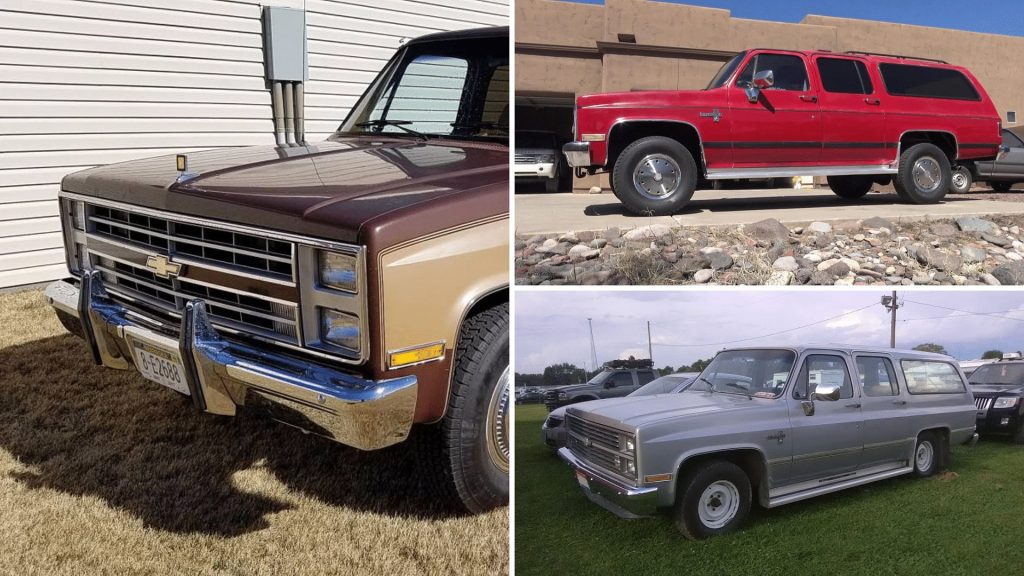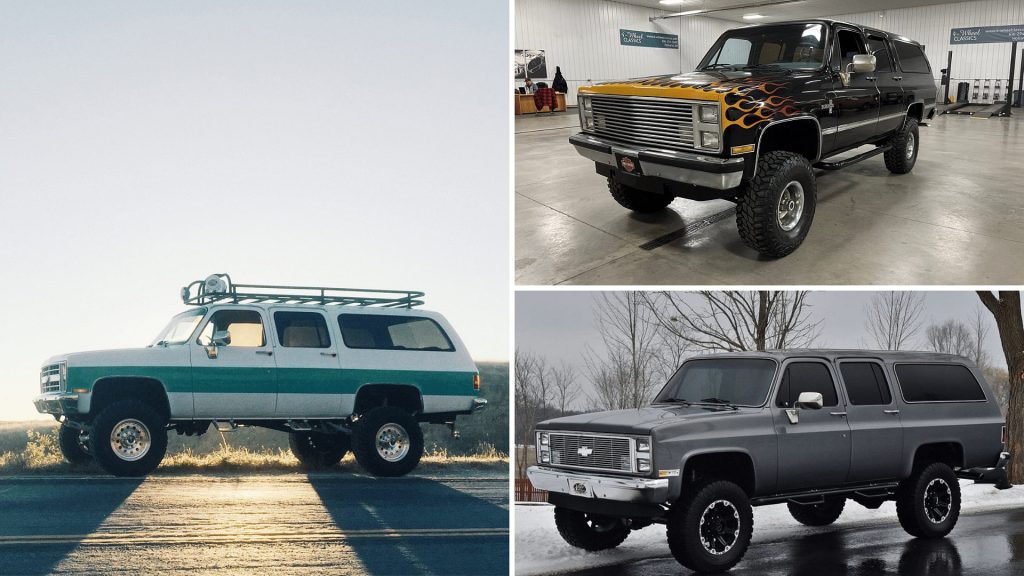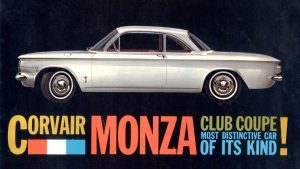
The classic Square Body Chevrolet Suburban made its debut in 1973, and during its almost two-decade run, it underwent subtle changes while maintaining its iconic square body shape. The Suburban eventually became a very successful car for its segment, all thanks to the square body, which helped the Suburban provide enormous interior space and seating capacity. If you are looking for the classic Suburban, we have brought you some facts that you should know about the Suburban and how much it is worth today.
Iconic Square Body Design
The 7th generation Chevrolet Suburban continued to pay homage to its iconic square body design while embracing modern features and technology. The square body design of the 7th generation Suburban featured a rugged and utilitarian aesthetic, characterized by flat, straight lines and sharp angles. Its front end showcased a prominent grille flanked by rectangular headlights, giving it a bold appearance.

One of the distinguishing features of this suburban generation was its generous interior space, which could be credited to the square body design, which optimized the interior, providing ample headroom and legroom for passengers in all rows. This square design was so iconic that it inspired brands like Ford to design their two-door off-road Bronco.
Notable Performance
Over the years, Chevrolet consistently improved the Suburban’s performance in various aspects, making it a well-rounded and capable vehicle. One of the key performance aspects of the Suburban was its engine options. Typically equipped with a V8 engine, the Suburban came with robust power and torque.

The choice of engines had evolved, with newer models offering a range of powertrains, including more fuel-efficient options like turbocharged V6 engines. For the new generation Suburban, the available base engine was a 250-cid inline-six with a small-block V8 and an optional 454-cid big-block V8 available. This generation saw its ultimate end in 1991, with 1988 being the last year that offered an updated engine, which was a 6.2-liter diesel engine.
Enormous Space
The Chevrolet Suburban was the choice of buyers for whom roominess and versatility were key factors in buying a car. One of the standout features of the Chevrolet Suburban’s interior was its generous seating capacity. Typically equipped with three rows of seats, it could comfortably accommodate up to nine passengers, making it an ideal choice for large families, group outings, or even commercial use like airport shuttles or limousines.

Moreover, the Suburban boasted a considerable cargo area, especially when the rear seats were folded down. This expansive cargo space was invaluable for hauling groceries, sports equipment, luggage, or larger items such as furniture, thanks to its flat load floor and wide rear hatch. Not only was it good at hauling, but it also ensured the comfort of the passengers with its four-season, two-unit air conditioning system, situated at both the front console and on the roof. Overall, its enormous and comfortable interior space, along with seating capacity, was its USP.
How Much Is It Worth Today
Owning a Suburban today is not a practical choice, but you won’t be buying it for practicality, would you? For a car of its age, it is still a decent option for occasional riding. But its average fuel economy of 10 mpg in the city and 17 mpg on the highway will make it expensive to ride. Moreover, it’s not exactly gonna be a big winner in terms of handling. However, it was made for seating many passengers comfortably, and it’s damn good at it.

You can get one for yourself if you’re willing to spend anywhere between $12,000 to $60,000. We would suggest you not worry about ownership costs as spare parts are readily available from GM, and even maintenance costs are on the lower side. However, you could see your spending somewhere around $16,000 for a Suburban in decent condition, which in our opinion is a bargain.
Conclusion
In conclusion, the Square Body Chevrolet Suburban, produced from 1973 to 1987, holds a special place in automotive history. While its exterior remained steadfast, under the hood and within the cabin, the Suburban saw significant technological advancements, making it a decent choice for owning today.
However, there are a lot of things that need to be considered before owning a classic. For a classic car like this, it would need restoring, and restoring a classic Square Body Chevrolet Suburban today can vary widely in cost, depending on factors like condition, rarity, and desired modifications. But if you are an enthusiast who is not afraid of spending a bit more then the Chevy Suburban is a good choice.





